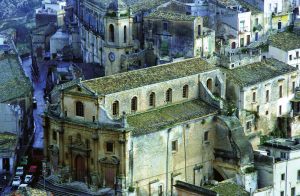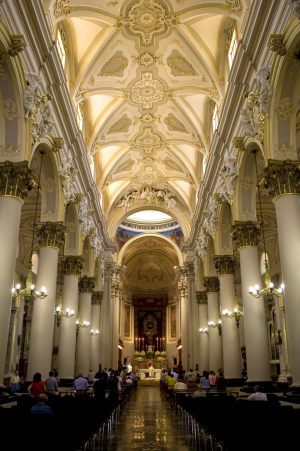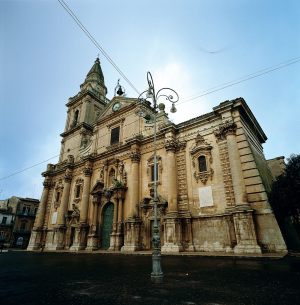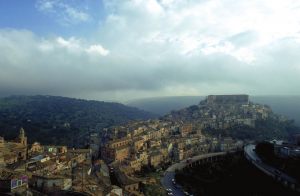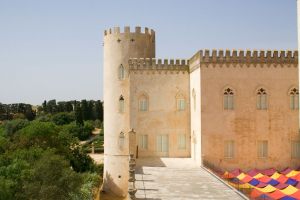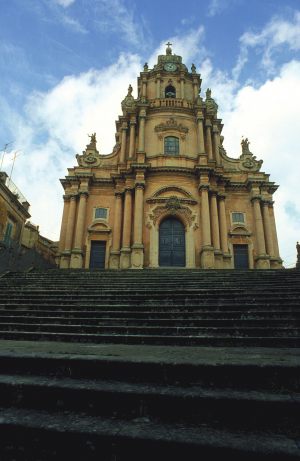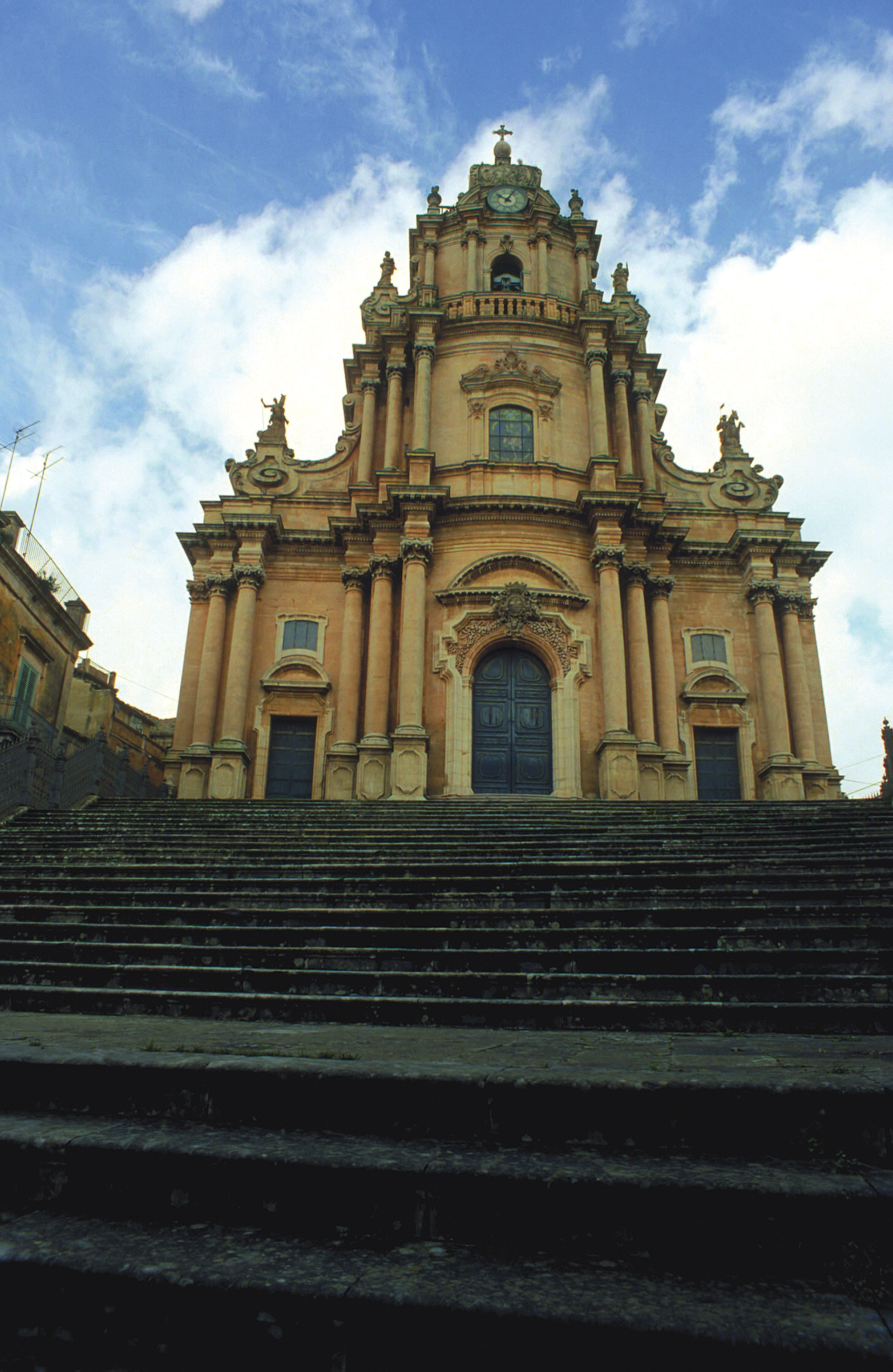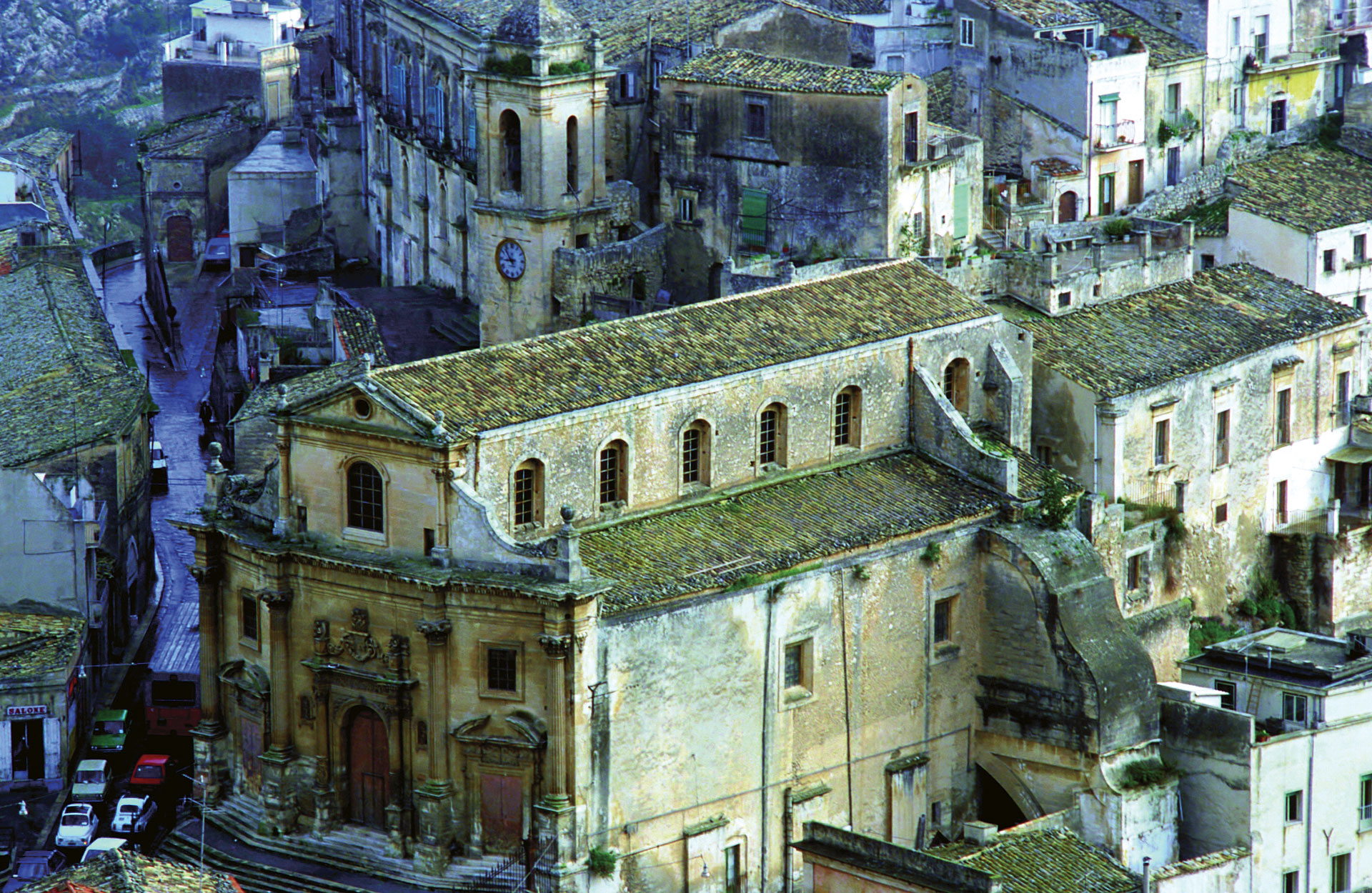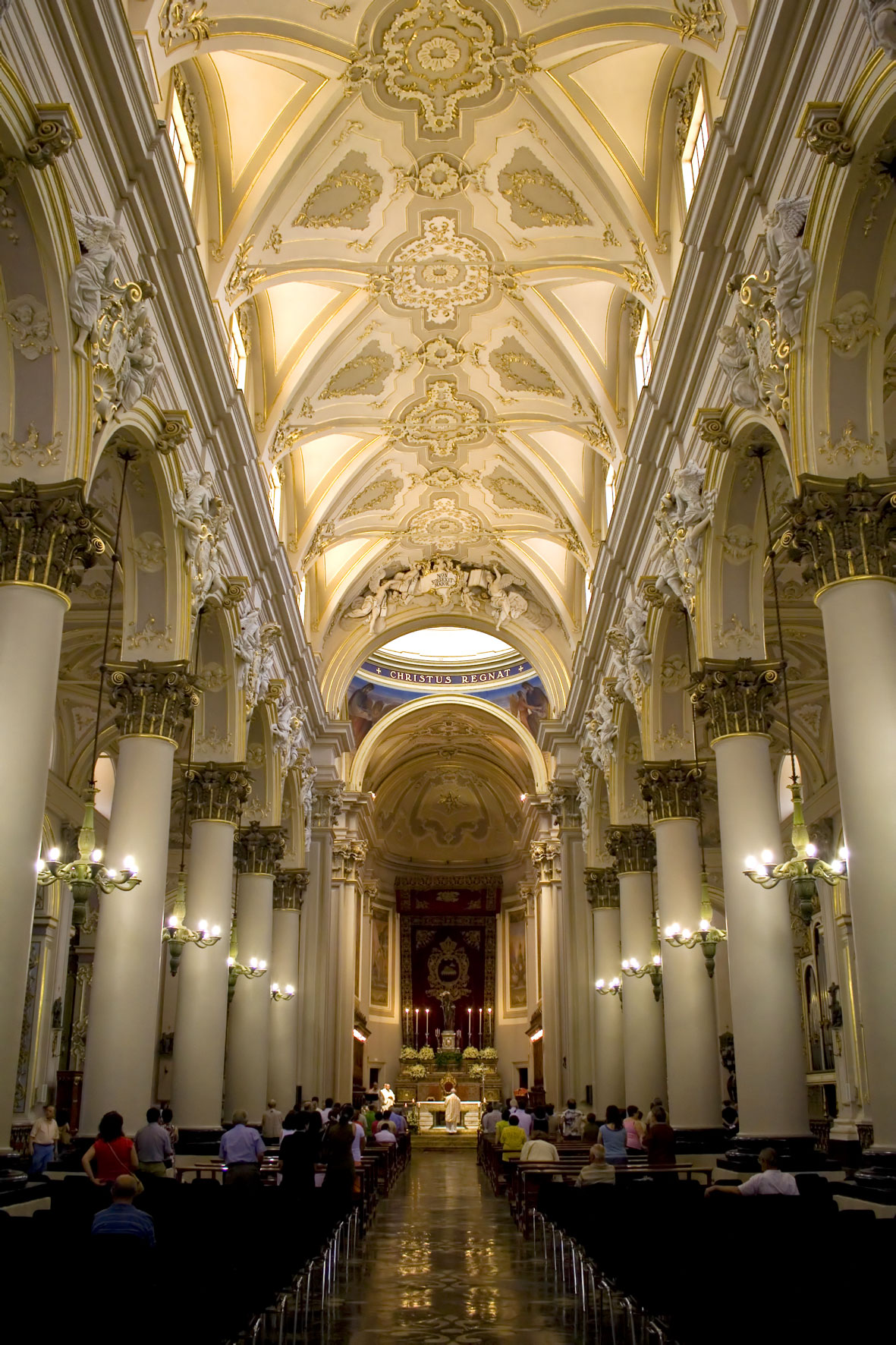Identita Ragusa
Amministrazione

SINDACO
Giuseppe Cassì
In carica dal: 24/06/2018
Deleghe
Contratti e Contenzioso, Avvocatura, Sport Edilizia Sportiva, Università, Frazioni, Politiche Giovanili Cultura e Beni culturali, Ambiente
Sito istituzionale
www.comune.ragusa.gov.it
Giovanna Licitra
Deleghe:
Vicesindaco, Sviluppo Economico, Mercati e Fiere Nazionali ed Internazionali, Zootecnia e Agricoltura, Politiche Agroalimentari, Gestione Società Miste, Finanziamenti Europei, Trasporti Sostenibili
Luigi Rabito
Deleghe:
Servizi Sociali, Politiche per la Famiglia, Sanità
Giovanni Iacono
Deleghe:
Bilancio, Tributi, Istruzione, Sviluppo di Comunità, Edilizia Scolastica, Verde Pubblico e Decoro Urbano, Affari Generali, Innovazione e Nuove tecnologie, Beni e Patrimonio del Comune, Rapporti con il Consiglio comunale, Protezione Civile, Servizi Cimiteriali
Giovanni Giuffrida
Deleghe:
Lavori Pubblici, Urbanistica e Strumenti urbanistici, Edilizia Privata, Infrastrutture, Servizi Tecnologici
Francesco Barone
Deleghe:
Polizia Municipale, Turismo, Spettacoli, Centro Storico, Personale, Tutela animali
Ragusa, the island in the island
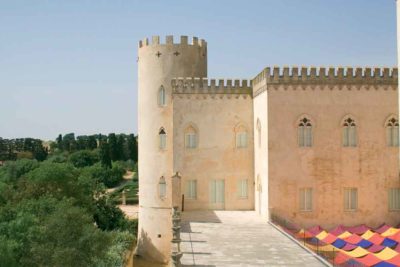
The castle of Donnafugata, located about twenty kilometers from the town and in the middle of a park covering eight hectares, is one of the most interesting tourist sites of Ragusa. In the lush park there are large Ficus trees and other exotic species. Inside it is a labyrinth, a circular temple, a coffee-house and artificial caves. Legend has it that Princess Bianca of Navarre was imprisoned there by Count Bernardo Cabrera, lord of the Modica County, but managed to escape through the tunnels that led into the surrounding countryside. The count was so feared by the rulers of Palermo that they did not react, nor did they ever resize his power. The 122-room building, whose original nucleus dates back to the seventeenth century, is distinguished by the overlap of styles that have alternated over the centuries. The most ancient element of the building is the seventeenth-century square tower located in the central part of the complex. Complex enlargement works were carried out in the early twentieth century by the will of Baron Corrado Arezzo de Spucches. The visitor has the opportunity to admire a precious gothic-Venetian style loggia, the Coat of Arms Hall, the Hall of Mirrors, the billiard room and the library.
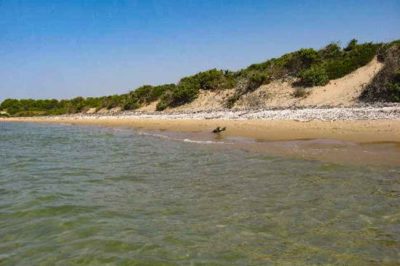 Nature reserve scrub forest of the river Irminio: is located in the territory of the municipalities of Ragusa and Scicli, in the province of Ragusa. Established in 1985 by the Regional Office of the Territory and the Environment, it extends around the mouth of the river Irminio. The reserve overlooks the Mediterranean Sea alternandocoste sandy cliffs sloping down to the sea. The flora consists mainly of Mediterranean scrub and has a rather large sample of vegetation in which we distinguish the following species: mastic, calcatreppola, sea lily, salsola, ravastrello, ephedra, juniper. Along the banks of the river grow tall trees such as poplar, willow and eucalyptus. The small crags are populated by agave, dwarf palm and thyme. The fauna is constituted, for the most part, by migratory birds that use the reserve as a rest area during the migration from Africa to northern Europe and vice versa. Among the most numerous species we can mention: knight of Italy, kingfisher, coot, little egret, buzzard, cormorant, hawk. In the aquatic areas there are frogs and toads while in the sandy areas there are the lizard and the rat snake. Finally, the presence of nutria deserves a mention, especially introduced.
Nature reserve scrub forest of the river Irminio: is located in the territory of the municipalities of Ragusa and Scicli, in the province of Ragusa. Established in 1985 by the Regional Office of the Territory and the Environment, it extends around the mouth of the river Irminio. The reserve overlooks the Mediterranean Sea alternandocoste sandy cliffs sloping down to the sea. The flora consists mainly of Mediterranean scrub and has a rather large sample of vegetation in which we distinguish the following species: mastic, calcatreppola, sea lily, salsola, ravastrello, ephedra, juniper. Along the banks of the river grow tall trees such as poplar, willow and eucalyptus. The small crags are populated by agave, dwarf palm and thyme. The fauna is constituted, for the most part, by migratory birds that use the reserve as a rest area during the migration from Africa to northern Europe and vice versa. Among the most numerous species we can mention: knight of Italy, kingfisher, coot, little egret, buzzard, cormorant, hawk. In the aquatic areas there are frogs and toads while in the sandy areas there are the lizard and the rat snake. Finally, the presence of nutria deserves a mention, especially introduced.
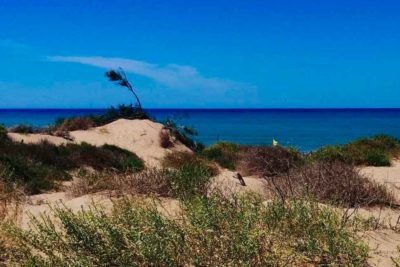 The Cava Randello Nature Reserve is a protected area located between Punta Braccetto and Scoglitti, in the province of Ragusa. It consists of: a pine forest that extends to the sea; a beach that runs along a small inlet. Located near the Pino d’Aleppo Nature Reserve, it has similar characteristics. Among the plant species, we can mention the spiny oak, the holm oak, the lentisk, the eucalyptus, the myrtle, the cypress. In the area, the ruins of some necropolis belonging to the archaeological complex of Kamarina have been found.
The Cava Randello Nature Reserve is a protected area located between Punta Braccetto and Scoglitti, in the province of Ragusa. It consists of: a pine forest that extends to the sea; a beach that runs along a small inlet. Located near the Pino d’Aleppo Nature Reserve, it has similar characteristics. Among the plant species, we can mention the spiny oak, the holm oak, the lentisk, the eucalyptus, the myrtle, the cypress. In the area, the ruins of some necropolis belonging to the archaeological complex of Kamarina have been found.
Toponymy – The origin of the name Ragusa dates back to the Byzantine era, Ρογος, Ragous, Rogos or granary, due to the agricultural wealth of the area. During the Arab dominion, the name became Ragus or Rakkusa which means famous place for an amazing event, probably a battle. Finally in the Norman and Aragonese age it was latinized in Ragusia, and then became Ragusa at the end of the 18th century. The seventeenth-century tradition, never confirmed, tended to identify the town with the ancient Hybla Heraia, whose actual location has never been ascertained; hence the name assumed by the ancient district of the city still called Ibla or Ragusa Ibla. The ancient Hybla Herea or Heraia, it is claimed that it derives its name from the Sicilian goddess Hybla, from which they took the name of all the Ible. Some scholars argue that the goddess was the protector of the fields, while others speculate that she may have been a protective deity of love and fertility. The Hybla of which we speak, stood in a strategic position, capable of withstanding powerful military attacks. For these geographical similarities, a correspondence with the territory of Ragusa Ibla has been hypothesized, situated on a hill that goes from about 385 (the Hyblaean gardens) to the 440 m (former military district) of height, surrounded by three hills that create a wall of natural belt.
Origins – The origins of the city date back to the fourteenth century BC, when several Sicilian villages began to bloom on the hill of Ibla. The territory was influenced by the Greeks and in the III century BC it came under the control of the Romans, who maintained it for about five centuries. During the High Middle Ages, the city underwent Byzantine domination. Around 700 AD, the Byzantines built, in Ibla, along the Irminio valley a wide wall and a military fortress, the Castle of Ragusa and the Saints Basilio and Nicola were named patrons of the city. In 848 the Arabs, after various and exhausting battles against the local populations, took possession of Ragusa; subsequently, in 866 AD, a violent rebellion resulted in the expulsion of the Arabs from all over the territory and only in 878 the city was again regained. Despite the troubled events, the Arabs inaugurated a period marked by progress both in economic and cultural terms. In 1090, an imposing popular revolt supported by Norman spies, definitively drove the Arabs from all over the Ragusano, triggering an invasion of the invader. From the Norman period, the city was administered for more than 500 years independently by various accounts, starting from Goffredo, the illegitimate son of Roger I of Sicily, who in 1091 received the fief of Ragusa. The castle was further fortified and made practically impregnable, so as to become the seat of the powerful Goffredo. After the marriage between Costanza d’Altavilla and Henry VI of Swabia, the Swabian domination began in Sicily; the city was incorporated into the state, although some privileges were restored thanks to the intervention of King Frederick II. The Angevin domination followed for a short time. In 1282 Ragusa, like other centers of the island, pushed the French troops away with the revolt of the Sicilian Vespers, led on the spot by Giovanni Prefoglio. Under the Aragonese, Ragusa regained the old Norman autonomy and was granted in Lordship precisely to Giovanni Prefoglio. His son Federico, who was reconfirmed Dominus di Ragusa, succeeded his death, but died without heirs in 1286. The county was inherited by his sister Marchisia Prefoglio in Chiaramonte, who married his son Manfredi Chiaramonte to Isabella Mosca, daughter of the Count of Modica, in 1296, giving life to the County of Modica, which incorporated the Lordship of Ragusa, brought as a dowry from Manfredi to his wife. In 1366, with Manfredi III Chiaramonte, the county reached its peak thanks to the acquisition of the lands of Terranova and of the whole Maltese archipelago. The last of the Chiaramonte, Andrea, fearing for the independence of the county, violently opposed the Duke Martino son of the king of Spain who disembarked in Sicily with an army commanded by General Bernardo Cabrera. Martino managed however to seize the island and had Andrea beheaded in Palermo. With the diploma of 20 June 1392, the king of Aragon Martino granted the County of Modica to Bernardo Cabrera. The latter settled in the ancient castle of Ragusa, first inhabited by the Chiaramonte family, and which ensured the same military protection for the Cabrera, but a greater splendor compared to that of Modica. The ragusani faithful to the Chiaramonte rebelled, but the revolt was suppressed in the blood, in Ragusa as in Modica. The rebels were imprisoned, tortured and killed. The new count enjoyed a private army, equipped with firearms (the first in Sicily), despite the rebellion raised Ragusa to the maximum prestige. The count finally loved by the ragusani mori of plague and was buried by his will in 1423 in the ancient church of San Giorgio in Ragusa. His son Giovanni Cabrera succeeded him. In 1447 the Ragusans, now exhausted by the bad management of the count, rebelled, assaulted the castle and burned the feudal archive, unconsciously destroying all the documentation on ancient and medieval Ragusa. The citizens forced the count to transfer his residence to Modica. It followed a process that represents a unicum in medieval history as the lord of a fief was accused by his subjects. The Count was forced to pay 60,000 scudi and to change city of residence, having been found guilty of harsh treatment against the Terrazzans. For the sake of truth, the Cabrera were also promoters, through the allocation of land in emphyteusis, of a lasting agricultural development: in exchange for a plot of land the farmer, in addition to the payment of the rent, was obliged to make improvements ; with this provision the foundations were laid for the birth of agricultural entrepreneurship, managed by the so-called massari. The Cabrera, the Enriquez – Cabrera, the Alvarez de Toledo and the Fitz-James Stuart, retained control over the County until the abolition of feudalism in 1812, and then the county’s legal dissolution in December 1816. In 1693, the disastrous earthquake in the Val di Noto, caused about five thousand deaths in Ragusa alone and destroyed numerous homes. The castle was partially destroyed and never restored. The ruins were demolished at the beginning of the 20th century to make way for the construction of the Military District Command of Ragusa. During the period of reconstruction, in perfect baroque style, the disagreements that divided the most important families became irreconcilable and a decree of separation of the city was requested in two separate municipalities, Ragusa Vecchia and Ragusa Nuova. The members of the new agrarian bourgeoisie, called sangiovannari for their devotion to St. John the Baptist, built their mansions on the hill of the Patro giving life to a new urban nucleus, while the nobles (sangiorgiari) rebuilt on the same site devastated by the earthquake; in 1703 a new decree ordered the reunification of the city. In 1738 Sicily passed under the control of the Bourbon monarchy.
Contemporary Ragusa – In 1848, together with the cities of Modica and Scicli, it rebelled against the Bourbon government. In 1860, following the success of the Expedition of the Thousand, Ragusa became part of the Kingdom of Italy under the guidance of Senator Corrado Arezzo de Spuches of Donnafugata. In 1865 the city was again separated into two separate administrations and in 1922 Ragusa Inferiore changed its name to Ragusa Ibla. In 1889, thanks to the huge wealth and flourishing agriculture that had belonged to the county, the Banca Popolare Cooperativa di Ragusa was born, the first embryo of the current Banca Agricola Popolare di Ragusa, which became a reference point for the entire economy of the island. At the beginning of the twentieth century, socialist ideas also spread throughout the Ragusa area; fascist historians described Ragusa as a fief of the reds, not unlike that of Bologna. Nonetheless, fascism imposed itself in Ragusa, which provoked a violent response similar to that of the Po valley. On 29 January 1921 a group of fascists destroyed the socialist circle of Vittoria, killing a man and wounding ten, two months later in Ragusa four people were killed and sixty were injured. The city was the first Sicilian to have given life to this political movement, to such an extent that in the littoria Tower built by Mussolini himself, the following sentence was engraved: Fascismo ibleo You first to rise in the generous land of Sicily. Later, in 1927, thanks to Filippo Pennavaria, a well-known fascist exponent, Ragusa became the capital of the homonymous province, and at the same time joined the neighboring municipality of Ragusa Ibla. During the Second World War, between 1942 and 1943, the city was shaken by the bombings due to the presence of the military airport of Comiso (the Axis fighter-fighters started from its trail). In 1943 the Hyblaean coast was then the theater of the Landing in Sicily by the Allies. The composite movement of the Do not start! of Ragusa, joined anti-militarists, fascists and separatists against forced enlistments to fight the republics. On January 4, 1945, the young Maria Occhipinti, one of the leaders of the movement, gave rise to a popular uprising. In order to get rid of a group of fellow citizens raided by the carabinieri, he did not hesitate to lie down on the road to block the vehicle on which these young recruits were being transported, even though they were in their fifth month of pregnancy. His gesture gave rise to an insurrection against the Italian cobelligerante army that fired on the crowd, killing a boy and a sacristan. The revolt of the Do not start! it also extended to Comiso, Modica and Vittoria. There were wounded, Ragusani imprisoned and forced to expatriate. On May 6, 1950, with a regular papal bull, Ragusa was erected to the dignity of the diocese, thanks to the shrewd and constant commitment of Mons. Carmelo Canzonieri, then parish priest of the church of San Giovanni Battista. In 1953 extraction work began in the first oil well discovered in the area.
Historic Center – The city is divided into two distinct urban areas, Ragusa Ibla or Inferiore and Ragusa Superiore, separated by a valley called Valle dei Ponti. The first has maintained over the centuries an original medieval structure full of stairways, narrow streets and baroque monuments. The second was built after the devastating earthquake of 1693 and retains a planar layout with an 18th-century layout. The protagonists of the post-earthquake reconstruction were Vaccarini, Palma, Giovanni Vermexio, Sebastiano Ittar, Vincenzo Sinatra and above all the famous Rosario Gagliardi. These, with the help of a bevy of local sculptors and master builders, helped to create a unique and particular phenomenon: the Baroque of the Val di Noto. Characterized by the use of local stone, rich in swirls, empty and full, columns and capitals, statues and architectural compositions, of which probably the Cathedral of San Giorgio is the highest expression. Most of the artistic heritage, with the sole exception of the cathedral of San Giovanni Battista and some eighteenth-century buildings, is located in the old quarter of Ibla. In 2002 the historic center of Ragusa for its Baroque architecture was declared a UNESCO World Heritage Site, along with seven other towns in the Val di Noto.
Religious Architecture
The church of San Giorgio, the patron saint of Ragusa Ibla, was built between 1739 and 1775 on a project by the architect Rosario Gagliardi, on the foundations of the ancient church of San Nicola. The originality of the structure lies in the imposing tower façade that includes the bell tower and in its location above a high staircase that accentuates its spectacular effect. The neoclassical dome was completed in 1820; with a double cap, resting on two rows of columns, it was designed by the Ragusan master builder Carmelo Cultraro, inspired by the dome of the Pantheon in Paris. The interior has a Latin cross structure divided into three naves. The side chapels preserve a rich patrimony of sacred paintings, while the central nave is surmounted by an imposing nineteenth-century organ; the sacristy houses a large sixteenth-century sculpture by Antonino Gagini, built for the ancient church of San Giorgio, severely damaged by the earthquake of 1693.
The ancient church of San Giorgio built in the twelfth century, had the utmost attention from Count Goffredo who modified, expanded and enriched the primitive church in both architectural aspects and furnishings and assets. The church judging from the portal, had to be of great magnificence, in line with the aesthetics that the ogival style required, it was therefore a large temple with three naves separated by seven columns on each side, enriched by twelve altars over three of the apse to the Baptismal Font. Characteristic of the building was above all the bell tower, built by the architect Ragusan Di Marco, a wonderful example of architecture with its 100 meters of height was among the highest in Europe. Of the terrible earthquake of 1693 only the portal remains, a magnificent example of Gothic-Catalan architecture built with soft limestone blocks, with a soft pink color. The lunette above the lintel represents the holy knight who pierces the dragon, with the kneeling queen of Berito attending the scene. The arch is contained between two fluted pilasters and the upper space is enriched by two large lozenges, inside which houses the Ragusa eagle. The interstices between the columns of the arch are adorned with figures representing the arts and crafts and, along the entire surface, by a theory of monstrous and imaginary figures, among flowers and leaves, the legacy of medieval bestiaries. In the splaying it has elegant beamed columns, which join together forming a harmonious arch; the last column of the nine bundles does not follow the arch but narrows, rises on the other eight to form a large flower.
Church of Santa Maria delle Scale: one of the few buildings that resisted the earthquake of 1693, was built around the middle of the fourteenth century and retains many Gothic elements, although in the last years of the eighteenth century the church was subjected to a series of works of restoration that deeply modified the structure.
The church of San Giovanni Battista, patron of Ragusa Superiore, rose before the earthquake in the west part of the city, under the castle walls. The master builders Giuseppe Recupero and Giovanni Arcidiacono planned the rebuilding in 1694, in Baroque style. In 1718, in order to meet the needs of the faithful, the expansion works were started; on the baroque façade, finely decorated, there are numerous sculptures, while imposing columns divide the façade into five distinct parts. On the sides of the portal, there are the statues of San Giovanni Battista and San Giovanni Evangelista and on the left there is a bell tower about fifty meters high. Inside, has a Latin cross plan, there are carved capitals, niches rich in statues and precious stuccos. In 1858 the great Serassi organ was built with a large carved and gilded wooden choir. In 1950 it officially became a cathedral of the diocese of Ragusa. The
Church of Purgatory, built around the middle of the seventeenth century, is one of the few sacred buildings that have survived the earthquake. Between 1740 and 1787 the temple was largely renovated and enlarged; inside, divided into three naves, there is the painting of Saints and Souls Purgantes, work of the eighteenth-century artist Francesco Manno.
The Church of Santa Maria dei Miracoli was built in the seventeenth century outside the town, following the discovery of an ancient sacred image; the plant has a particular octagon shape. When in 1951 the building was closed to worship, the statues inside it were transferred to the church of San Giorgio.
Church of Santa Maria dell’Itria: it is the commendale church of the Sovereign Military order of Malta under the title of San Giuliano, founded by Baron Blandano Arezzi in 1626, near the hospital of the same name. The name derives from the Greek Odygitria (that is to say the one indicating the path). The church was not particularly affected by the earthquake, but was also enlarged and modified in Baroque style, becoming one of the most important places of worship in the neighborhood.
Church of San Filippo Neri: built around the seventeenth century thanks to the brotherhood devoted to the saint, the very simple façade overlooks a small churchyard and is embellished by the entrance door. The interior, in the hall, with a chapel on the right side, was remodeled at the end of the nineteenth century.
Church of San Giuseppe: built in 1756 on the initiative of the Benedictine nuns, designed by Gagliardi, the three-sided façade is rich in carvings and sculptures. The interior is characterized by an oval plan, the roof consists of a large dome.
Convent and church of Santa Maria del Gesù: built around 1636 at the behest of minor reformed friars, the façade has a characteristic gabled shape and has as its sole ornament the portal punctuated by two semi-columns supporting a broken tympanum. There is a small bell tower located on the left side of the church. The interior is richly adorned with stuccos and frescoes.
Convent and church of San Francesco all’Immacolata: the church probably rose in the thirteenth century, the Franciscan friars wanted to allocate it at the end of the town to be able to carry out the reception and care of the sick. The bell tower is among the oldest in Sicily, dating from the Swabian period.
Church of San Vincenzo Ferreri: it was built in the early sixteenth century, it was not particularly damaged by the earthquake, but probably underwent some changes. It has a very simple linear elevation that has two columns with Corinthian capitals and a tympanum, broken by a large window. The bell tower is embellished with polychrome stone beams. The interior is frescoed with wall paintings that represent medieval Ragusa, outside there is an ancient sundial dating back to the early sixteenth century. The church was the subject of an important restoration completed in 2010; the building is currently used as a public auditorium.
Civil Architecture
Palazzo Zacco: the palace, one of the most beautiful in upper Ragusa, was built by Baron Melfi. It has two elevations, in each of which there are three balconies in the main floor. The entrance door is flanked by two columns on high pitches in pitch stone, with Corinthian capitals on which the central balcony rests with a wrought iron railing. The jambs of the balconies are supported by corbels with two registers: in the lower one grotesque masks, in the upper one fantastic figures that follow those of other nobiliary palaces, coeval or built in previous decades. In the corner head between the two streets, the huge heraldic shield of the Melfi of S. Antonio. With this building Ragusa enters the rococo style more unrestrained that only reflected in a few other buildings. The building will become the seat of the museum of Ragusan traditions.
Palazzo Schininà di Sant’Elia: it was built in the late eighteenth century by the baron Mario Leggio Schininà marquis of Sant’Elia and first mayor of Ragusa Superiore. It extends for an entire block, since 1950 the northern part has been donated to the diocese and then the seat of the bishopric and some administrative offices were transferred there. Of the very long prospectus, only the ground floor on which the two doors open is complete. The north wing facade has seven balconies on the first floor: in the middle is the central door, bordered by two pilasters on high plinths, enriched with garlands, with rococo capitals. From the main door one can access an internal courtyard from which the sumptuous staircase leads to the porticoes of the main floor. The six balconies are supported by large corbels with very fine leaves; the ornaments of the jambs repeat the motif of the central balcony and culminate with a classic baroque shell. It is the largest construction of the late eighteenth century of Ragusa.
Palazzo Sortino-Trono: it was built in 1778 on part of the walls of the ancient castle. The imposing façade overlooks the piazza degli archi and overlooks the balcony. There is a large entrance portal, slightly convex, which holds a balcony with a linear frame made of limestone with pitch stone inlays. The three side balconies have large pitch-stone corbels carved with plant motifs and, in the openings, limestone cornices, with a characteristic rococo style frieze frieze. On the sides of the entrance door are two small oval openings and in the three parties, large windows with a mixtilinear frame surmounted by a shell frieze.
Palazzo Bertini: it was built at the end of the eighteenth century; features the sculptures present, three large heads, called masks that depict three characters of the Baroque culture: the beggar, the nobleman and the merchant. The first is covered with rags and shows a deformed face with a big nose and a mouth without teeth, the noble, with a proud look, has an elegant plumed hat from which protrudes the curly hair, while the merchant has a chubby face with a great turban and an earring with a large pearl, a sign of wealth and opulence.
Palazzo Battaglia: thanks to its majesty and the richness of its decorations, it is one of the most original buildings of Ragusa Ibla. The works for its construction were completed around the mid-eighteenth century; the façade, which opens up in front of the church of the Santissima Annunziata, has a large mannerist style portal, flanked by two large windows. Above the central balcony you can see the emblem of the Battaglia and Giampiccolo families.
Palazzo della Cancelleria: it was built in the first half of the eighteenth century by the will of the Nicastro family; around the middle of the next century the building was bought by the Municipality that established the Chancellery. The baroque façade stands on the little square where the stairway meets, which has united for centuries the two districts in which the city is divided. Two high pilasters enclose the space in which the great grandstand stands out, the most valuable element of the construction.
Palazzo Cosentini: it was built in the eighteenth century by the initiative of the baron Raffaele Cosentini. The three balconies present, are characterized by the wealth of decorations of the shelves with masks grotesque and deformed faces surmounted by figures of musicians, in the central one, figures alluding to the abundance and in the right one, people of the people. The façade is lateral, outlined by two high pilasters.
Palazzo La Rocca: it was built around 1765 by the baron La Rocca di S. Ippolito. The façade, sober and elegant, is characterized by seven balconies each supported by three pitch-stone shelves. There are some anthropomorphic figures among which the flautist, the lute player, the commoner with the child and the two figures united in a hug, repeated by the puttini in the lateral shelves, are particularly interesting.
Circle of conversation: the aristocracy of Ragusa decided to build its own circle of conversation, a rare example of a building built specifically for this purpose. It is also called Caffè dei Cavalieri. Built in 1850 in neoclassical style it is one of the few recreational facilities that has been preserved intact. The one-storey façade is elegant and sober, about 10 meters long, in neoclassical style. It has three doors divided by six fluted pilasters with capitals of Doric style, the cornice adorned with triglyphs, in correspondence of the doors has three bas-reliefs with two winged women holding a lamp and two sphinxes on the sides. On the cornice, the coat of arms of the city flanked by two anthropomorphic lions surrounded by a garland of flowers. The sumptuous banquet hall shows a ceiling frescoed by the Ragusan Tino Del Campo at the end of the 19th century with an allegory of arts and sciences and four medallions at the corners. Being a private room is not open to the public, but the availability of members often allows the visit.
Porta Walter or Porta Vattiri is the only one of the five entrance gates to the ancient city that has lasted for centuries and is one of the few remains of the city walls. It was built in 1643 on the occasion of the visit of the Viceroy of Sicily Giovanni Alfonso Enriquez de Cabrera. The door, 5 meters high and 3 meters wide, above the lowered arch has a Latin inscription on two rows of carved limestone blocks. Unfortunately, the six lines of Latin characters are now almost illegible. From Porta Walter it goes down a small road that leads to the Santa Domenica valley and the road to Modica.
Byzantine Walls: next to the Church of the Most Holy Lord Found, located on the eastern outskirts of Ragusa Ibla, and behind the church of the Santissimi Souls of Purgatory in the neighborhood of the Arches, there are the remains of Byzantine walls of the eighth century that were part of the walls defensive wall of the castle of Ragusa built by the Byzantines and then enlarged by the Normans.
Ponte Vecchio: in 1843, with the construction of the Ponte Vecchio, the city developed southwards, in fact the bridge allowed the overcoming of the natural obstacle represented by the S. Domenica valley. In Roman architectural style also called the Capuchins, it was wanted by the Capuchin Father Gianbattista Occhipinti Scopetta (1770-1836).
Ponte Nuovo: in 1937 the second bridge was inaugurated, called Ponte del Littorio, commonly called by the citizens of Ponte Nuovo or Ponte di Via Roma. It was built during the twenty years of fascism, together with the adjacent Piazza Libertà, once Piazza Impero, thanks to the influence of Filippo Pennavaria. At the highest point measuring forty meters, it is about one hundred thirty two meters long and about ten meters wide, over the two meters wide sidewalks each. It has four reinforced concrete pillars covered with hard limestone (live stone) and four arches.
Ponte Papa Giovanni XXIII: in 1964, due to the intense development of the city, a third bridge was built, the Ponte Papa Giovanni XXIII (also called Ponte San Vito to distinguish it from the bridge of ’37) with a single span, joins the district of Carmine with the Cappuccini district.
Torre Cabrera di Marina: the Torre Cabrera of Marina di Ragusa is also located in the municipal territory. It is a coastal defense tower, built in the 16th century to protect the old port of the Ragusa district.
Giardino Ibleo: it was built in 1858, it stands on the east end of Ibla at about 385 m., Inside is the imposing war memorial of the great war and the church of San Vincenzo Ferreri, the church of San Giacomo and the Capuchin church. Near the garden, the archaeological excavations of Ragusa Ibla have brought to light many findings of ancient Hybla.
There are other buildings and historical monuments of cultural importance:
church of San Rocco; church of Sant’Agnese; church of San Sebastiano; of St. Thomas; the church of the Ecce Homo; the church of the Capuchins; the church of San Vito; of San Paolo; of San Leonardo; the church of San Francesco di Paola; the church of San Domenico; the church of San Giacomo. Again: the Castle of Donnafugata; Palazzo Lupis.
Archaeological sites
The iblea area has returned several archaeological findings. In a cave located in Fontana Nuova, near Marina di Ragusa, some scrapers and splintered stone cutting blades were found, dating back to 30,000 years ago. It is the oldest find discovered so far in Sicily. Most of the finds are kept in the Hyblaean Archaeological Museum.
Kamarina. The ancient city stood on three hills, as evidenced by the parts of archaic walls and a large tower. The remains of Hellenistic houses have been identified: Altar House, Inscription House and Casa del Mercante.
Monte Arcibessi. In the territory of Monte Arcibessi there are fortified settlements, the castellieri, the Bronze Age and the Iron Age. Also present prehistoric settlements, remains of ancient Greek settlements, evidence of the Hellenistic-Roman era and Byzantine and medieval remains.
Cave of the Trabacche. Archaeological site of monumental architecture of the Roman and Byzantine era.
Castiglione. Sicilian-Greek settlement with remains of two large districts of the 6th century BC, fortifications, urban road, a sacred area and a Greek necropolis. Among the most important finds of the entire area of the Iblea, there is the Castiglione Warrior a bas-relief from a single slab of local limestone, depicting an armed horseman with a left-handed steed, the extremities of the block are decorated with the protomi a bull and a sphinx.
The city’s economy, supported by agriculture, small and medium-sized industry and a markedly growing tourism, appears to be one of the most solid in the South. The main agricultural productions are those of oil and vegetables, favored by the introduction of the serricoltura, particularly widespread in the area of Marina di Ragusa. Another important productive sector is that of the breeding of the bovine breed called Modica; this activity is linked to the production of typical products such as mozzarella and caciocavallo. The latter, a DOP brand, known and appreciated even across the border, can be produced both from Modica bovine milk and from other cattle breeds such as Friesian or Brown. As for the asinine breeds, the Ragusan donkey is present, among the few Italian breeds of a certain value and particularly appreciated for the quality of the milk. Honey processing has intensified in recent years.
Agriculture in the Ragusa area is generally practiced within complexes called farms and known for the size of their courtyards. Small and medium-sized industries are mainly active in the processing of agricultural products: there is the presence of the dairy, confectionery and canning industry. Local craftsmanship is specialized in the processing of wrought iron and copper. The presence of asphalt and oil has attracted various mining industries in the past. To date, the progressive depletion of fossil fuel deposits in the municipal area has led to a reduction in petrochemical plants and their related industries. However, the Eni Versalis group company, specialized in the chemical sector, operates in the area and, in the waters facing Marina di Ragusa, there is the Vega platform, the largest in the Mediterranean with an average of five thousand barrels extracted every day. The industrial area of the city is among the largest in the south; rapidly expanding, according to surveys by Censis and Istat, it hosts mostly micro, small and medium-sized enterprises, divided into six product groups: agri-food and feed, materials and accessories for the building industry, marble and granite, wood-furniture, chemical-plastic, engineering-plant engineering. To the industry of Ragusa, it is possible to attribute 60% of the production of polyethylene and plastics for agriculture at a regional level.
In recent years, the number of tourists visiting Ragusa has recorded steady growth thanks to the baroque wealth of its historic center, rich in monuments that became part of the UNESCO World Heritage Site in 2002, the food and wine offer and the beautiful beaches of the coast. The port of Marina di Ragusa and the airport of Comiso, have further stimulated the flow of tourists which in turn has led to an increase in accommodation and catering facilities.
Demographic evolution – Starting from the catastrophic event represented by the earthquake of 1693, due to which lost five thousand lives in a total population of thirteen thousand inhabitants, the city recorded a continuous growth up to 18,883 in 1861. In forty years, the population almost doubled and continued with a positive trend until the first post-war period. Between 1921 and 1951 it witnessed a considerable demographic decline, and then reversed the trend during the post-World War II period, in line with the economic boom. In 2013, the annual increase of the population is + 4.1%, due to a positive balance of the migratory movement that offsets the negative natural balance (-129 units).
Ethnic groups and minorities – There are 22.660 foreign residents present in the Iblei, a number that makes Ragusa the first Sicilian province for the incidence of migratory phenomenon on the total population (7.01% of the resident population), a figure more than double compared to the regional average (3.2% of the resident population) but lower than the national figure of 8.1%. According to the ISTAT data as of December 31, 2013, the foreign population residing in Ragusa was 3,892 people. The most represented nationalities: Tunisia, Albania, Romania, Poland, Morocco.
Museums – Museo Archeologico Ibleo: was established in 1961 and preserves the archaeological finds of the excavations from the countryside of Ragusa covering a period ranging from prehistory to the Greeks of Camarina, up to the late Romanesque. Museum of the Ragusan traditions at the Zacco Palace and also the Regional Archaeological Museum of Camarina; Peasant Time Museum, Carmelo Cappello collection; Civic Museum Italy in Africa; Cathedral Museum; Cathedral Museum; Obsculta – Benedictine Museum; Natural Museum and the Asphalt Mines of Tabuna and Castelluccio.
Libraries – Biblioteca Comunale with location in via Zama (Ragusa), via Benedetto Brin (Marina di Ragusa), Donnafugata Castle Library, Municipal Historical Archives in via Zama.
Sacred and Profane – The main religious festivals are linked to the cult of San Giovanni Battista and San Giorgio, respectively patrons of Ragusa Superiore and Ragusa Ibla. In 1063 the important battle of Cerami marked the defeat of the Arabs in Sicily. The Normans circulated the rumor that the battle had been won thanks to just a hundred horsemen, against preponderant enemy forces. Legend has it that St. George, at the behest of God, came down to earth to help the Norman soldiers, Count Goffredo decided to build the imposing church dedicated to the Holy Knight in Ragusa.
In 1643 San Giorgio was proclaimed as main patron and protector of the city of Ragusa. The building in Gothic-Catalan style, was severely damaged by the earthquake of 1693, today it remains a splendid portal. The cult of San Giovanni Battista, patron of Ragusa Superiore, dates back to the 6th century AD. when in the district of the cosentini, a church devout to the saint was erected, outside the walls of Ibla. Campanil wars began between the devotees of the two patrons who led to the formation of two autonomous municipalities; only in 1926 the two administrations met after about two centuries of separation.
By now there is no real opposition between the two Saints, and both are celebrated with lavish processions. The one dedicated to St. John the Baptist takes place on 29 August and has the participation of thousands of faithful, many of whom follow the statue of the Saint barefoot carrying heavy candles. On the days of the anniversary an important fair of commercial and craft products is inaugurated. The Feast of St. George, scheduled at the end of May, is characterized by the mixing of the religious aspect with a more properly folk and joyful one. It foresees a procession during which the faithful carry on their shoulders the statue of the Holy Knight, which seems to dance, followed by a Santa Cassa with the relics of the saints. During the Holy Christmas, typical nativity scenes are set up in Ibla. The valleys of Ragusa also provide ideal settings for the creation of living nativity scenes.
Another very felt occasion, that of Santa Maria di Porto Salvo, scheduled for August 15 in Marina di Ragusa. The simulacrum carried in procession through the streets of the seaside resort, is then translated on a boat that runs along the coast. The party includes pyrotechnic games. The Organ Festival is an event held in November-December, with a centuries-old tradition in organ craftsmanship. Ragusa Ibla, is the setting for the street artists’ festival, the Ibla buskers, scheduled for the month of October. The streets and squares become outdoor theaters in which jugglers, storytellers, balancers perform for the joy of adults and children.
The Mediterranean Agricultural Fair (September-October) is the most important event at the regional level of the agricultural and livestock sector, is one of the most significant in Italy.
Among the typical ragusani dishes we remember some varieties of homemade pasta, in particular cavati and ravioli alla ragusana, the squared pasta cooked in chicken broth. For Christmas Eve dinner, scacce, homemade bread, tomasini stuffed with ricotta and local sausage are prepared. At Easter they prepare turciniuna, breaded lamb and cassata. The latter is an oven-baked cake consisting of a pastry basket filled with sweetened ricotta and flavored with grated lemon peel. After cooking, the cassate is sprinkled with cinnamon and in the most modern variants, often ricotta is added to the dark chocolate pieces. On the tables of Ragusa there are typical local products such as cheeses, mostly caciocavallo and provola ragusana.
Bernardo Cabrera, (Barcelona, 10 August 1350 – Catania, September 1423), noble Spanish condottiero, buried in Ragusa
Giovanni Battista Odierna (Ragusa, 13 April 1597 – Palma di Montechiaro, 6 August 1660) was an Italian presbyter, architect and astronomer.
Teodoro Belleo (Ragusa, 1540 – Padua, 1600) was an Italian doctor
Maria Paternò Arezzo (Ragusa Ibla, 11 December 1869 – Messina, 28 December 1908) was an Italian philanthropist
Maria Barba, (Catanzaro, 16 January 1884 – Ragusa, 12 June 1949), Carmelite nun, beatified by Pope John Paul II
Vann’Antò, (Ragusa, 24 August 1891 – Messina, 25 May 1960), was an Italian poet
Maria Occhipinti, (Ragusa, 29 July 1921 – Rome, 20 August 1996) was an Italian activist and writer
Carmelo Cappello, (Ragusa, 21 May 1912 – Milan, 21 December 1996), sculptor
Giorgio Lucenti (Ragusa, 19 September 1975) is a former Italian football player, who played as a midfielder
Santino Coppa, born in Ragusa, October 25, 1950, basketball coach
Carmelo Occhipinti (Ragusa, 5 October 1974) is an art historian and Italian art critic
Loredana Cannata, (Ragusa, 14 July 1975) is an Italian actress and activist
Angelo Russo (Ragusa, 21 October 1961) is an Italian actor
Stead, stage name of Stefano Antoci D’Agostino, (Ragusa, 13 September 1978) is an Italian singer, guitarist and multi-instrumentalist, resident in London
Giovanni Spampinato, (Ragusa, 6 November 1946 – Ragusa, 27 October 1972) was an Italian journalist, victim of the mafia.
Deborah Iurato, (Ragusa, 21 November 1991) is an Italian singer
Come arrivare
The main roads of Ragusa are: State Road 115 South Western Sicula, comes from Syracuse, crosses the major urban centers of the province and continues to Gela; State road 115 South West Sicula, connects Ragusa with Modica; State Road 194 Ragusana, alternative artery to the busiest SS514 of Chiaramonte, connects to the mountain towns of Giarratana and Monterosso; State road 514 of Chiaramonte, very important artery of communication that connects Ragusa with Catania; Provincial Road 25 Ragusa – Marina di Ragusa, connects the capital with the village of Marina di Ragusa. The railway line that crosses the territory and serves the city is that of Siracusa-Gela-Canicattì. The line crosses and connects directly some of the largest urban centers in Ragusa, has only one track and has never been electrified, due to the tortuosity that limits the speed of the trains. Rail freight traffic is currently almost non-existent, despite the high potential of the high-productivity areas of Ragusa, Modica, Vittoria, and the intense commercial exchanges of the port of Pozzallo. In the municipal territory there is the marina of Marina di Ragusa. It occupies an area of 238,000 m² and is equipped with floating pontoons. The inauguration took place on the evening of 10 July 2009 in the presence of political and military authorities. The Pio La Torre airport, managed by Comiso Airport Company, is open to national and international commercial traffic, about 15 km from Ragusa. Born as a military airport, it was converted into general civil aviation and cargo and was included in the regional plan of Sicilian air transport, which provides for the establishment of two aeronautical poles: the western one, consisting of the airports of Palermo and Trapani, and the eastern one , represented by the airports of Catania and Comiso. The airport was opened to civil traffic on 30 May 2013. In Ragusa, there are also: the Giubiliana airfield, with a 7/25 oriented track of 700 m asphalt; the Elpi Fly flying field with oriented track 05/23 of 320 m x 20 m in clay (Marina di Ragusa).
Urban mobility – The urban transport service in the city is managed by AST (Azienda Siciliana Trasporti), a series of lines that reach all the districts of the city. The main terminus of the urban service is the Zodo Node which is located next to the bus station and the Piazza del Popolo Node, which is located in front of the train station.
